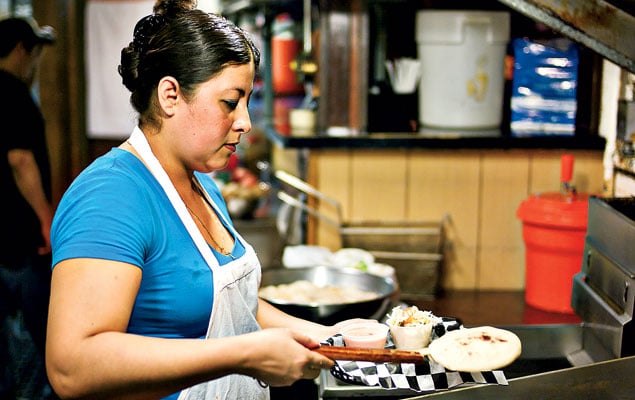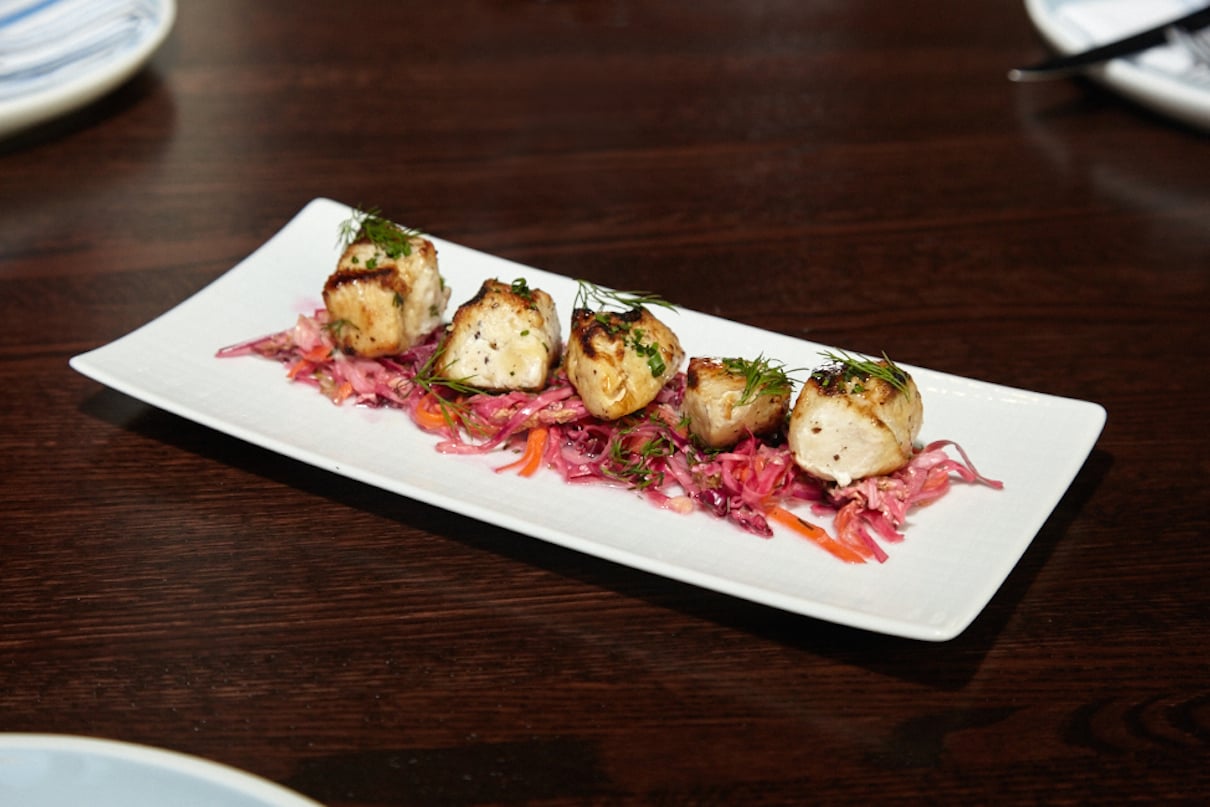It would be easy to regard the half-smoke that arrives in the middle of the tasting menu at Komi–Washington’s best restaurant–as slumming, a self-congratulatory invocation of street food amid a gastronomic tour de force. Johnny Monis, the chef at this Dupont Circle destination, has rejiggered the iconic local snack, lightening it and altering its spicing, making diners ponder the parallels between the dog at Ben’s Chili Bowl and a Mediterranean-style chorizo.
But the half-smoke stands for something more–what in the wine world is termed terroir, an expression of time and place.
Washington’s best restaurants long had a generic quality about them, a sense that you could be eating in any important world capital. If there was an anchoring dish, it was a crabcake or a soft-shell, a statement of seasonality and regionality. The local-food movement has helped turn seasonality and regionality into imperatives, and the farmers who sustain the region have begun to make their mark on the top kitchens. We applaud that development.
We also applaud a development typified by Monis’s half-smoke: the desire of chefs to incorporate local-food culture into their menus, as chefs in LA and Chicago have done for years.
Vietnamese cooking–rife in Falls Church–has provided the most obvious blast of inspiration. Restaurants as different as DC’s Dino, Poste, and Dickson Wine Bar have featured a bánh mì. Chefs from Peter Smith to Gillian Clark have experimented with the flavors of the Vietnamese soup pho, testament to the market penetration of pho parlors across the region.
Salvadoran food has been around here for more than a quarter century, but only recently have chefs acknowledged its presence. At Garrett Park’s Black Market Bistro, pupusas are part of a pork dish; at Franklins in Hyattsville, they’re starters, the sort of warm, gooey cheese vehicles that mid-level restaurants often feature as appetizers.
The Hamilton–the new 24-hour restaurant in downtown DC from Clyde’s Restaurant Group–may be uneven, but we loved seeing, in addition to bánh mì, an appetizer of ssam, Korean lettuce wraps enfolding marinated beef.
We’ve yet to see any chef serve a duck breast or veal loin with an Ethiopian wat, the spicy, red-pepper sauce that cloaks lamb or a leg of chicken. Perhaps someday soon. We can’t wait for the day when a wat is not a “what?”–as familiar a sight on the plate as a crabcake in November.
This article appears in the April 2012 issue of The Washingtonian.














